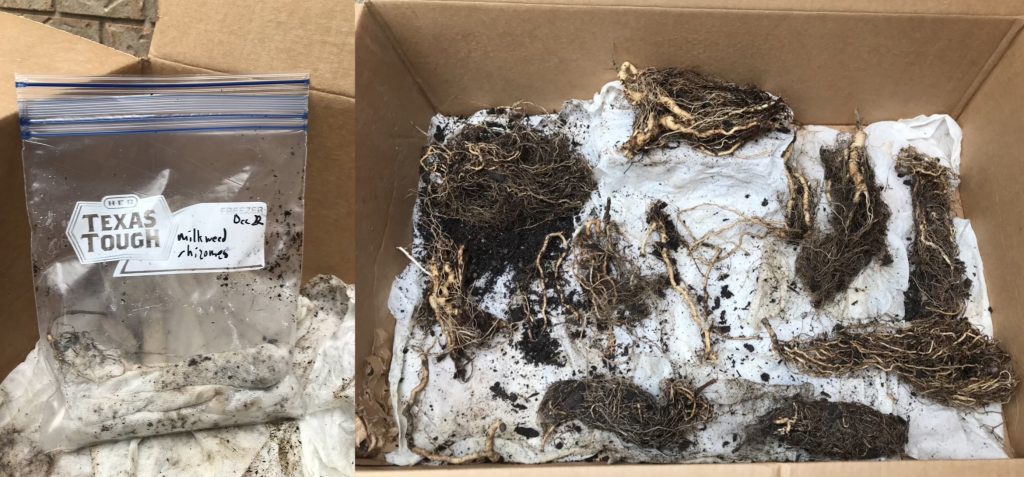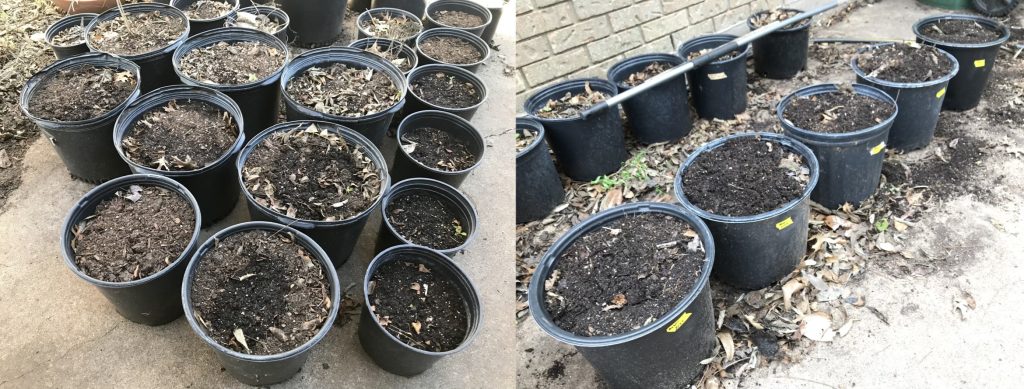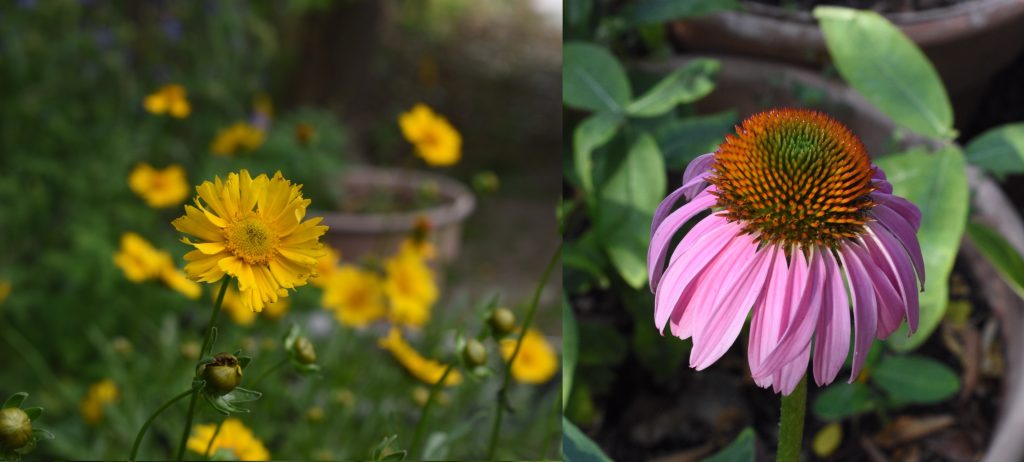I planted 30 milkweed rhizomes on Thursday (February 16th), a major step in my 2023 monarch butterfly raising project. Rhizomes are thickened underground stems that store starch for plants. Rhizomes can send down roots and send up stems. In the late fall, all of the above ground foliage on milkweed plants dies. The milkweed rhizomes then overwinter underground. In the spring, they provide the energy for the plant to sprout. Some types of milkweed also spread via their rhizomes. The underground stems grow horizontally and, over the years, the plant will form a clump with many above ground stems.
In fall of 2022, I had 66 milkweed plants growing in planters of various volumes, from around 25 gallons down to small, 6” planters that only hold about a quart. I decided to leave the rhizomes in “large” planters — which I defined as 3 gallons or larger — in their potting soil. This is what I’ve done most years.

Left: Milkweed rhizomes wrapped in damp paper towels and stored in a ziplock bag. Right: Milkweed rhizomes unwrapped and ready to be planted.
However, over the winter, I tipped out all of the small planters and fished out the rhizomes. There were 30 such containers. I wrapped the rhizomes in moist paper towels and put them in ziplock bags. The bags were kept in the refrigerator. I have done this successfully a few times in previous years, so I knew it would work.
The reason I did this was to move the milkweeds to larger planters. Moving them as rhizomes, I believe, is better than waiting for them to sprout and moving them as growing plants.

Left: Five-gallon planters holding the rhizomes. You can also see some of the 2-gallon planters on the right edge of this photo. Right: Three-gallon planters holding milkweed rhizomes.
The rhizomes themselves ranged in size. I planted the 6 largest in 5-gallon planters. I planted the next 5 largest in 3-gallon planers. The rest went into 2-gallon planters, so some may not have gotten a larger container. Most did, however, as some of my planters were quite small.
Planting the rhizomes was easy, I just sunk a trowel into the potting soil and pushed some soil aside. I placed the rhizome vertically into the hole created by the trowel and then removed the trowel. If the top of the rhizome was sticking out of the soil, as it usually did, I added a little more potting mix to the top of the planter.
The temperature inside the refrigerator was around 40 °F. The low temperatures Thursday and Friday night were in the low 30s °F. So the rhizomes got a final couple night’s worth of cold temperatures. Now, they will start to warm as the forecast calls for a lot of days in the 70s–80 °F and nights in the 50–60s °F coming up. If the last 10 years are any indication, the milkweeds should start sprouting in mid-March — right around the time of the average last frost.







Recent Comments